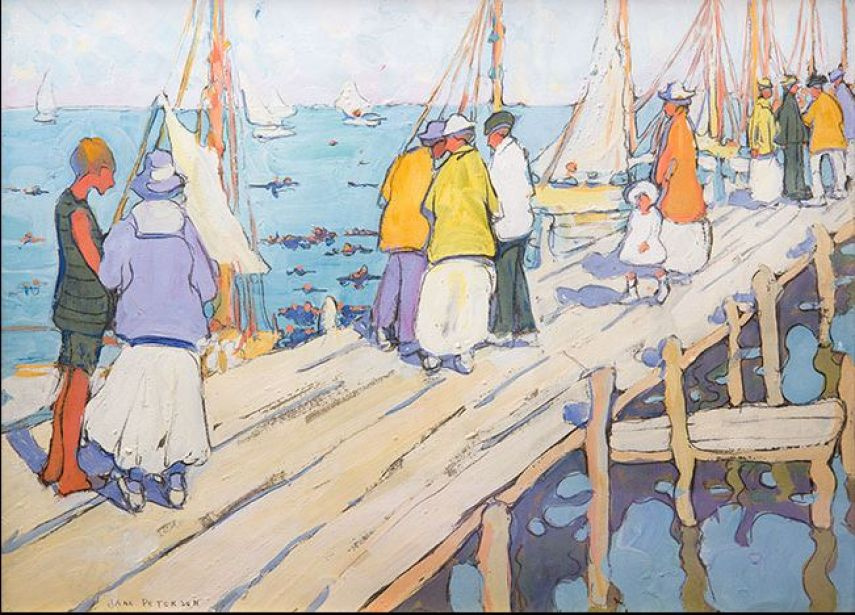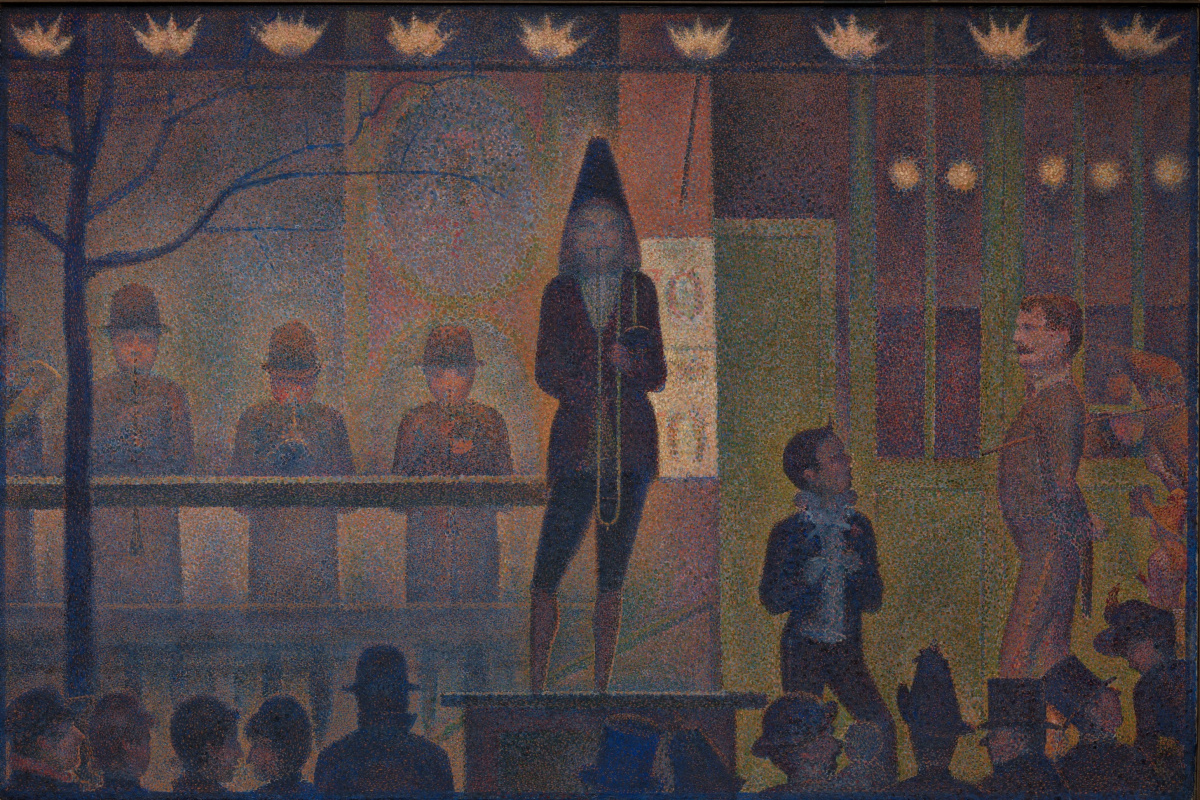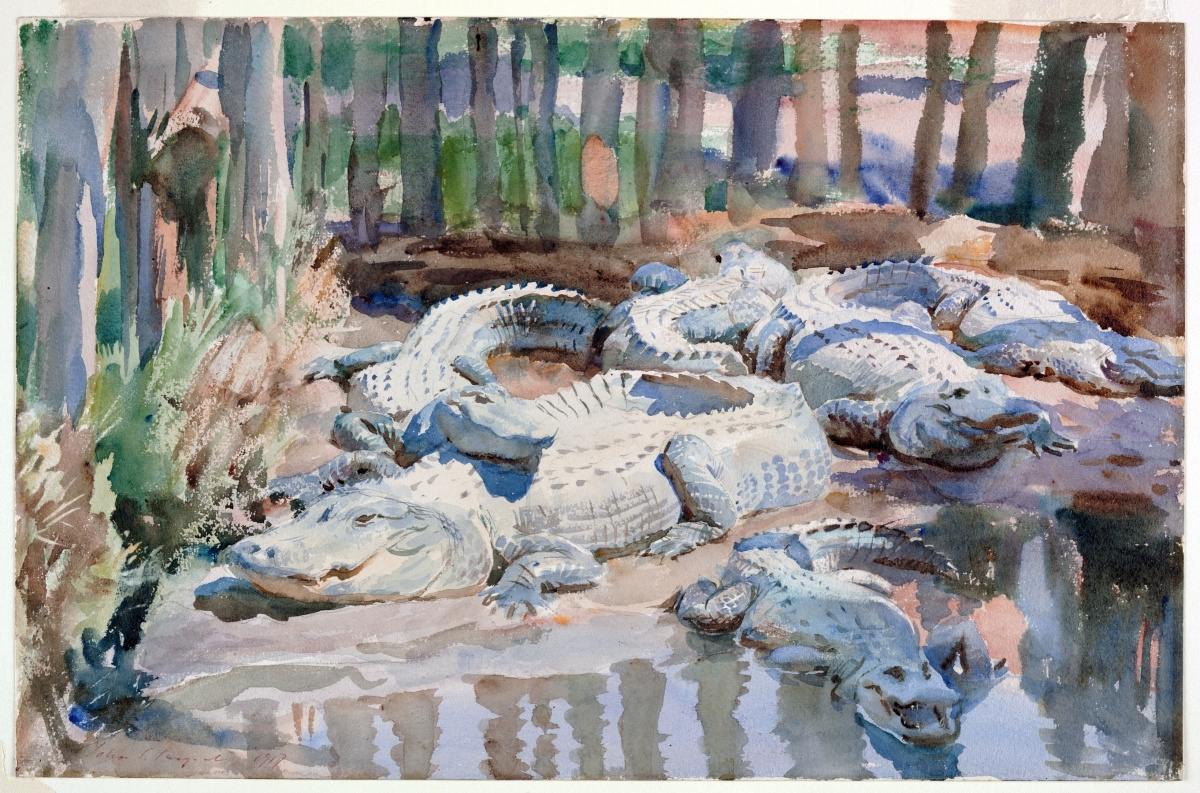
Seurat's Circus Sideshow
Where: The Metropolitan Museum of Art, New YorkWhen: February 17 — May 29, 2017
The exhibition comprises more than 100 paintings, drawings, prints, period posters, and illustrated journals that give a vivid sense of the seasonal fairs and traveling circuses of the day.
Among the highlights will be Fernand Pelez’s epic Grimaces and Misery—The Saltimbanques (1888), loaned by Petit Palais, Paris.
Left: Georges Seurat, Trombonist (Study for "Circus Side Show"), 1887−88, conte crayon & chalk on buff laid paper. Philadelphia Museum of Art, Pennsylvania, PA, USA
Turner’s Modern and Ancient Ports: Passages through Time
Where: The Frick Collection, New YorkWhen: February 23 — May 14, 2017
Mystical Symbolism: The Salon de la Rose+Croix in Paris, 1892–1897
Where: Solomon R. Guggenheim Musem, New YorkWhen: opens June 30, 2017
In 1892 Joséphin Péladan (1859−1918), an author, critic, and self-proclaimed high priest of the occult, organized the first Salon de la Rose+Croix in Paris. This annual exhibition that took place five years subsequently, was focused on Symbolism, a mystical art trend dominating during the 1890s. It proclaimed the reign of mystical and mythical scenes, images of femmes fragiles and fatales, and androgynous creatures. Chimeras and incubi were the norm, as were attenuated figures and antinaturalistic forms.
American Watercolor in the Age of Homer and Sargent
Where: Philadelphia Museum of ArtWhen: March 1 — May 14, 2017
The exhibition American Watercolor in the Age of Homer and Sargent at Philadelphia Museum of Art will focus on the stars created by American watercolor movement, like Winslow Homer, John La Farge, Thomas Moran, and William Trost Richards. In the 1880s they were adjoined by Thomas Eakins, George Inness, and others. Together, they shaped their passion for watercolor that inspired the new generation of younger artists, such as Maxfield Parrish and Jessie Willcox Smith, decorators from the circle of Louis C. Tiffany, and plein air masters Childe Hassam, Maurice Prendergast, and John Singer Sargent. After them, Edward Hopper and Charles Demuth, as well as their contemporaries chose watercolor as a principal medium.
Left: Childe Hassam, The Island Garden, 1892. Watercolor on paper. Smithsonian American Art Museum
Moholy-Nagy: Future Present
Where: LACMA (Los Angeles County Museum of Art)When: February 12 — June 18, 2017

This is the first comprehensive retrospective of the works by László Moholy-Nagy (1895−1946) in the United States in nearly half a century. Moholy-Nagy: Future Present at LACMA (Los Angeles County Museum of Art) reveals an utopian artist who believed that art could work hand-in-hand with technology.
László Moholy-Nagy was not only a pioneering painter, but also a photographer, sculptor, and filmmaker as well as graphic, exhibition, and stage designer. Don’t forget to mention him as an influential teacher at the Bauhaus and later the founder of Chicago’s Institute of Design.
The exhibition comprises more than 250 works, some of which have never before been shown publicly in the U.S.
Left: László Moholy-Nagy, Vertical Black, Red, Blue, 1945. Los Angeles County Museum of Art
Matisse in the Studio
Where: Museum of Fine Arts, BostonWhen: April 9 — July, 9, 2017
Matisse in the Studio at Museum of Fine Arts, Boston, is the first major international exhibition that demonstrates the importance of Matisse’s studio collection -- a treasured group of objects that was instrumental to Matisse’s studio practice. It offers unprecedented insight into creativity of this great artist who revolutionized 20th-century art.
Chagall: Colour and Music
Where: The Montreal Museum of Fine Arts (MMFA)When: January 28 — June 11, 2017
Music was a constant source of inspiration for Marc Chagall. It was his favorite motif for his paintings, it served as an internal rhythm and driving force for his compositions, and a key to his color palette. His passion for music is closely linked to his family and the Jewish culture of his native Vitebsk, as well as to the performances for which he created sets and costumes. The exhibition Chagall: Colour and Music at The Montreal Museum of Fine Arts (Musée des beaux-arts de Montréal) is organized in collaboration with the Los Angeles County Museum of Art and initiated by the Philharmonie de Paris — Musée de la musique, and La Piscine — Musée d’art et d’industrie André Diligent, Roubaix. The multidisciplinary exhibition comprises 400 works — paintings, sculptures, maquettes, gouaches, stained glass windows, photographs, films, costumes and puppets — many of which are little known by the public.
Left: Marc Chagall, Final maquette for the mural at the Metropolitan Opera, Lincoln Center, New York: The Triumph of Music, 1966. Private collection





























